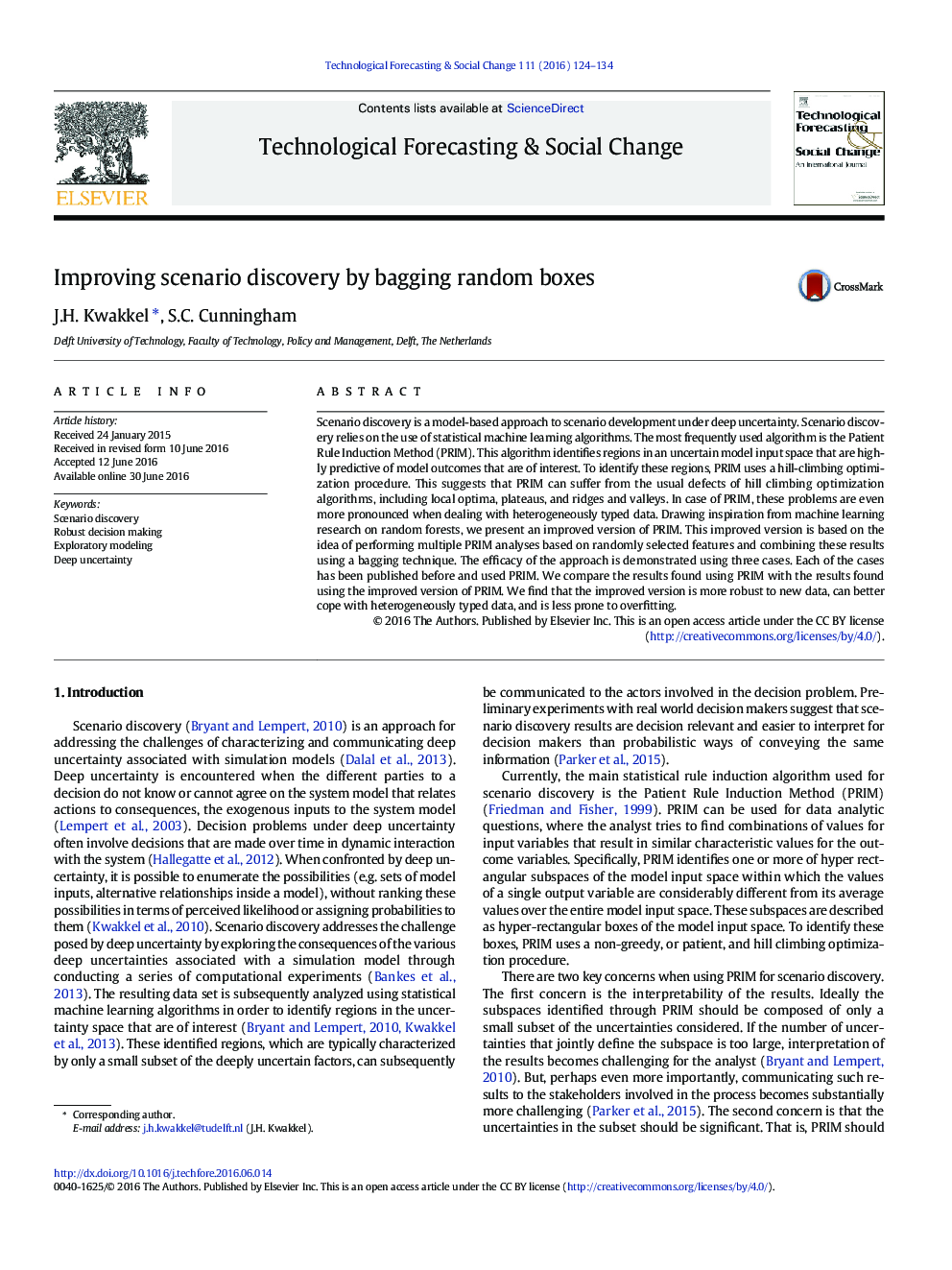| Article ID | Journal | Published Year | Pages | File Type |
|---|---|---|---|---|
| 5037155 | Technological Forecasting and Social Change | 2016 | 11 Pages |
â¢We propose an extension to the Patient Rule Induction Method, the algorithm underpinning scenario discovery.â¢The extension is inspired by the Random Forest extension to CART.â¢The extension is compared to normal PRIM and shown to outperform PRIM.â¢We propose a feature scoring technique based on the PRIM extension.
Scenario discovery is a model-based approach to scenario development under deep uncertainty. Scenario discovery relies on the use of statistical machine learning algorithms. The most frequently used algorithm is the Patient Rule Induction Method (PRIM). This algorithm identifies regions in an uncertain model input space that are highly predictive of model outcomes that are of interest. To identify these regions, PRIM uses a hill-climbing optimization procedure. This suggests that PRIM can suffer from the usual defects of hill climbing optimization algorithms, including local optima, plateaus, and ridges and valleys. In case of PRIM, these problems are even more pronounced when dealing with heterogeneously typed data. Drawing inspiration from machine learning research on random forests, we present an improved version of PRIM. This improved version is based on the idea of performing multiple PRIM analyses based on randomly selected features and combining these results using a bagging technique. The efficacy of the approach is demonstrated using three cases. Each of the cases has been published before and used PRIM. We compare the results found using PRIM with the results found using the improved version of PRIM. We find that the improved version is more robust to new data, can better cope with heterogeneously typed data, and is less prone to overfitting.
